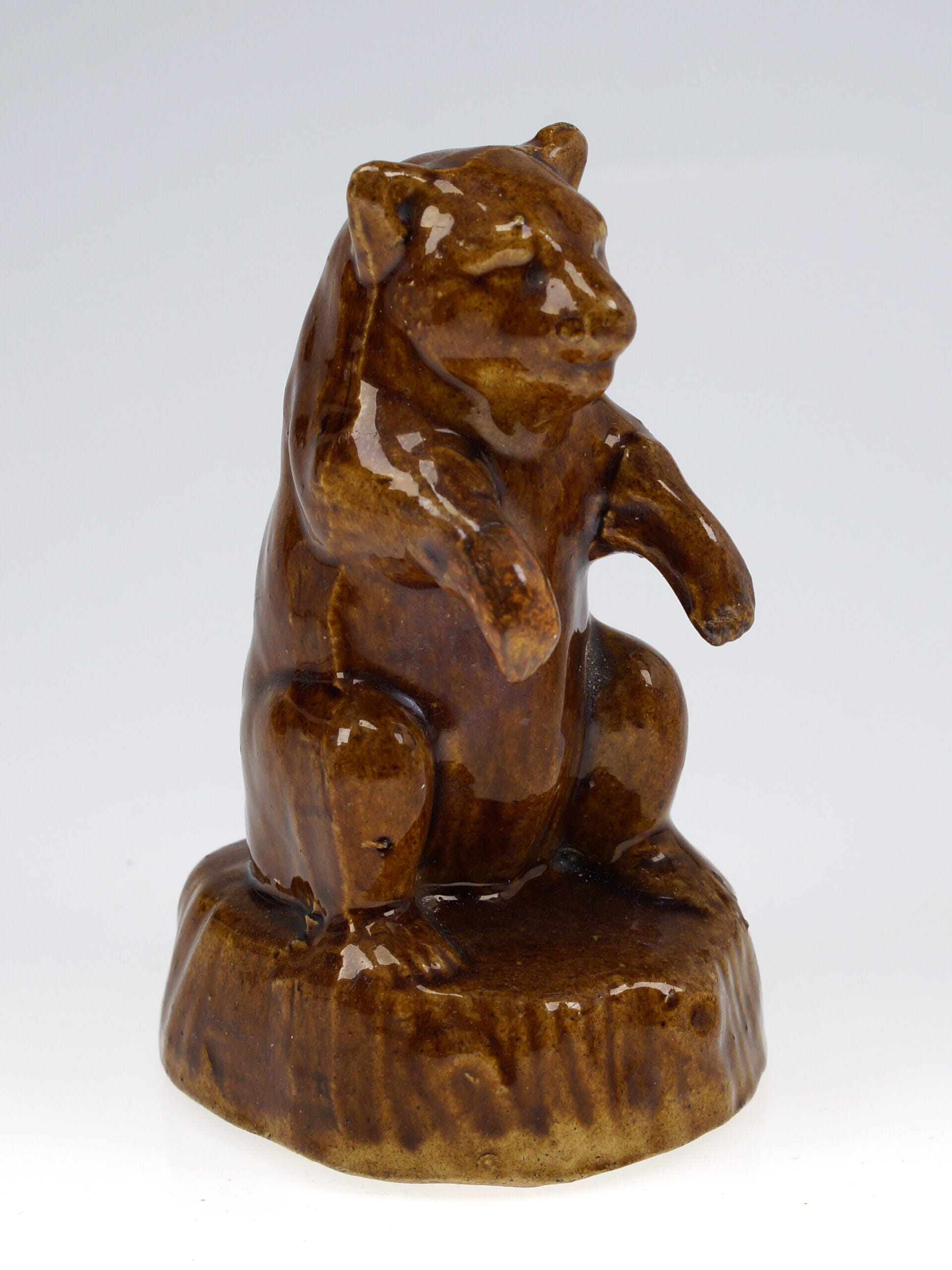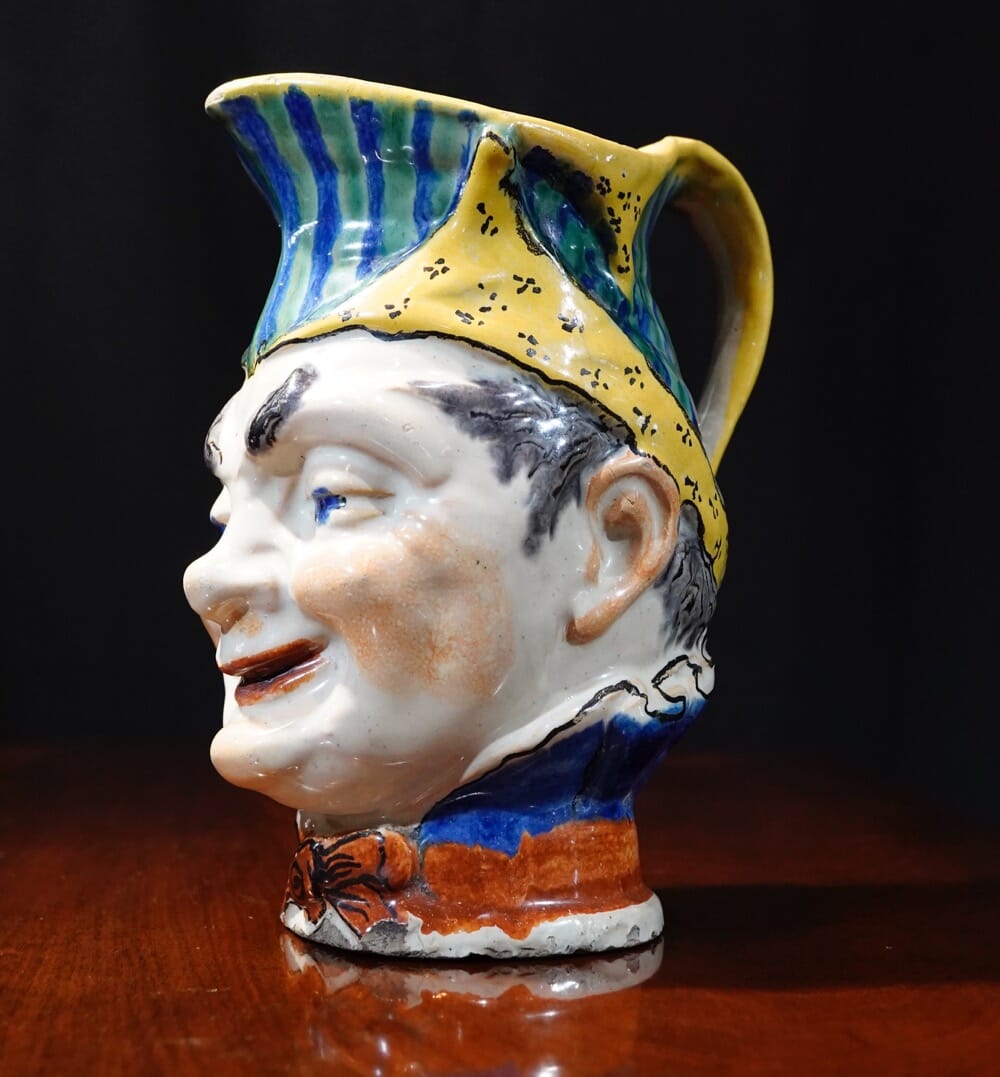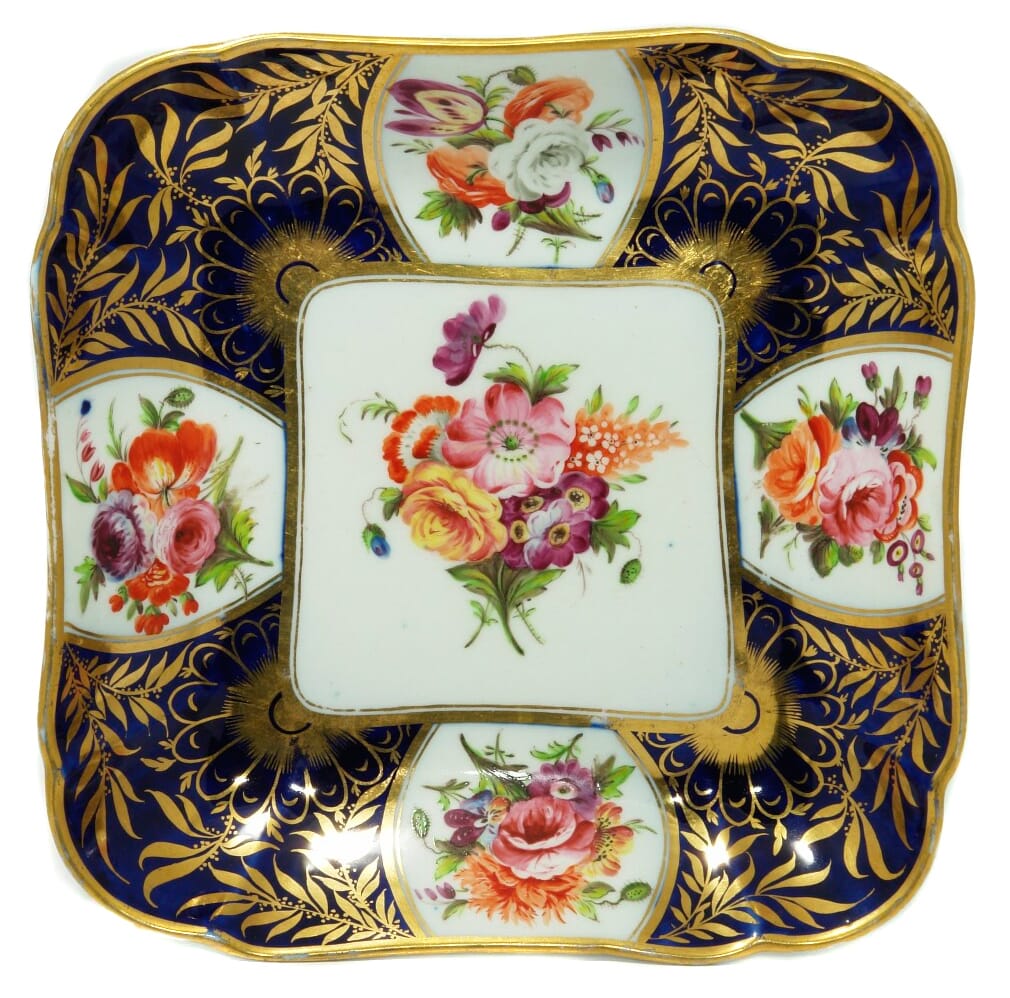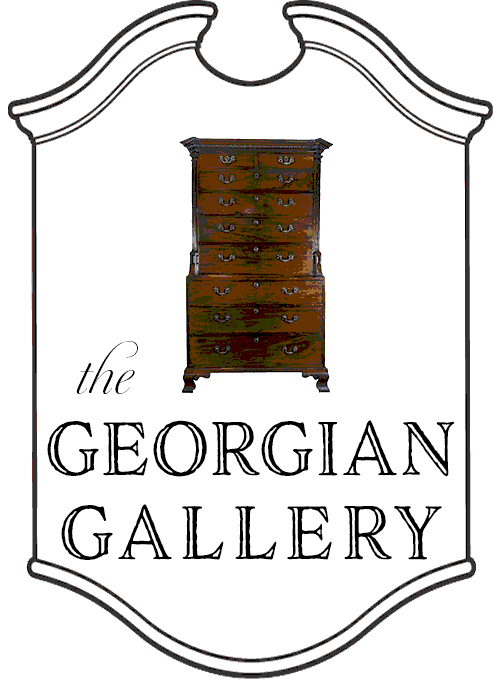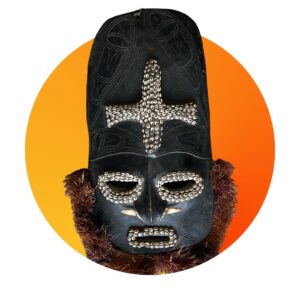Naples, Real Fabbrica Ferdinandea plate with classical sculpture decoration, c. 1790
Naples porcelain plate, well painted with a central colour depiction of an ancient Roman sculpture, the rim with a band of colourful flowerheads within black line rims.
Real Fabbrica Ferdinandea
(unmarked)
circa 1790
When the Real Fabbrica Ferdinandea factory opened in 1771-72 after the closure of the factory at Capodimonte, the young King Ferdinand IV of Naples was in his early twenties and had a blossoming enthusiasm for porcelain production, a view which had been discouraged by the statesman Bernardo Tanucci, who had overseen the Regency council of the King in his youth.
In the following years, and with the encouragement of Giuseppe Beccadelli, Principe di Camporeale (1726-1813), the diplomat and newly appointed Primo Segretari di Stato from 1776, the King took an increasing interest in the factory. In 1779 the Marchese Domenico Venuti (1745-1817) was appointed as Direttore Interino of the factory, a role that would combine administrative duties and artistic direction. The Real Fabbrica factory began what would be a significant stylistic shift in its production.
Domenico Venuti had a natural inclination to the antique, trained as he was in archaeology. He was also the son of the Antiquarian and Scholar Marcello Venuti, who had previously been the General Superintendent of Antiquities for the city of Naples and had been appointed to oversee excavation of archaeological sites, as well as publishing numerous works on the subject, including Descrizione delle prime scoperte dell’antica citta d’Ercolano of 1749. It is under the direction of Domenico Venuti that the Royal factory moved away from their Rococo past at Capodimonte, and looked towards Neo-Classicism, inspired by the art of the Kingdom, which was then literally re-surfacing.
What is most interesting is the link with the Farnese collection of ancient sculpture. This is mostly now a part of the Naples Archaeological Museum www.museoarcheologiconapoli.it – but was until the time of Ferdinand IV located in the Villa Farnese, near Rome. Marchese Domenico Venuti, who had been the director of excavations at Herculanium before being appointed director of the Naples factory, was given permission to move the collection to the newly erected palace at Caserta: this took place between 1786-1800, and once installed in the immense palace building, it gave great prestige and showed the Naples Kingdom to be the emerging symbolic centre for art & culture in Italy. It would seem the image on this plate is linked to the Farnese collection…..
There are few surviving records from the factory, and tracing the original patron who commissioned what was probably an extensive service may not be possible; we can however relate to several other Naples services of this period,
The ‘Servizio Farnesiano’, or Farnese service -views of Pompeii, Herculanium excavations
“SERVIZIO DELLA DUCHESSA DI PARMA” – classical figures placed together in naturalistic settings
This plate represents a fascinating combination of ideas, with actual sculpture on plinths depicted – and yet, coloured naturalistically. Our ‘classical eye’ desires pure white Greek & Roman marbles, and yet originally they were quite brightly coloured with pigments; as the statues were excavated from under the ash of Vesuvius, they would have retained some of this colour in an obvious way – perhaps Venuti influenced the colouring of the classical marbles depicted on this service.
| Condition | |
|---|---|
| Size | |
| References |

